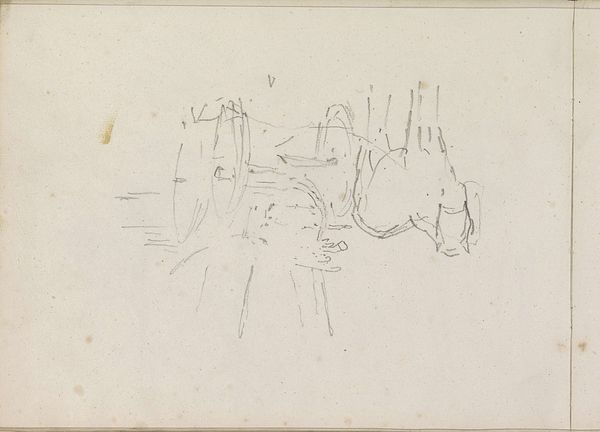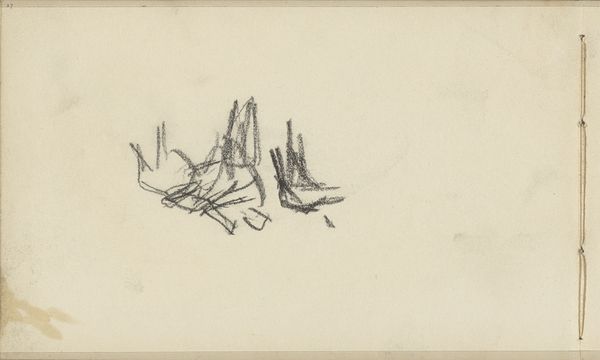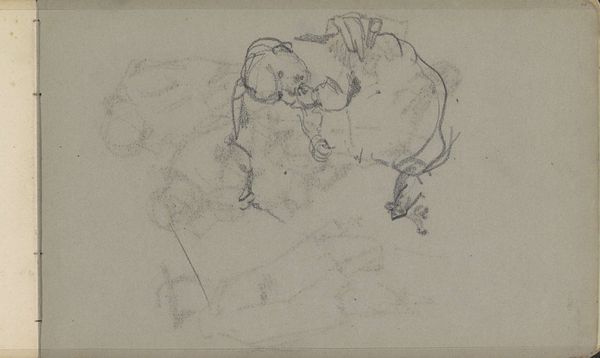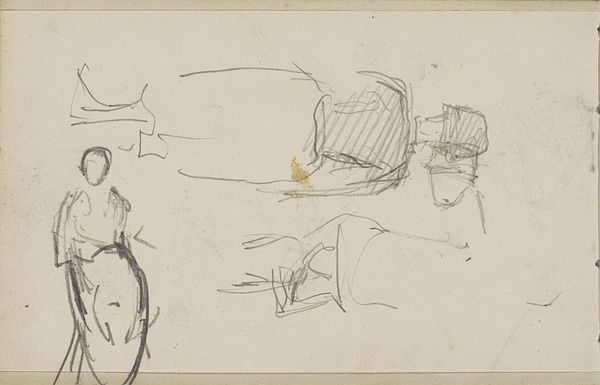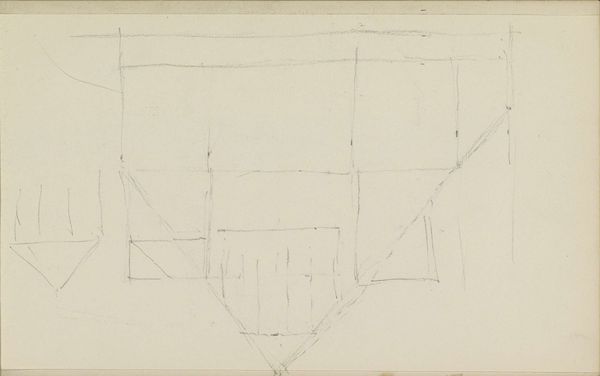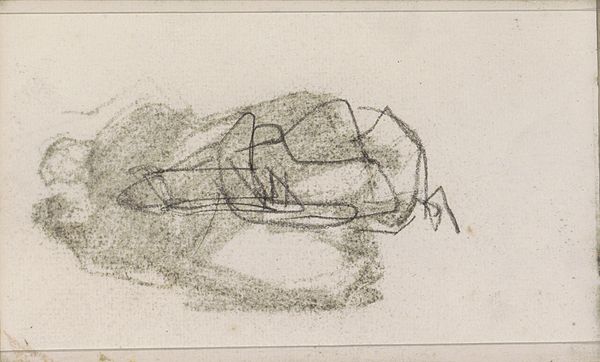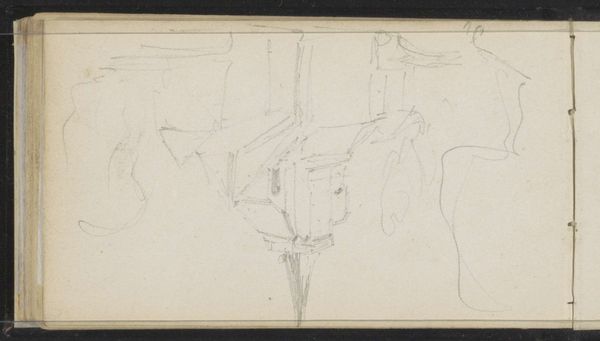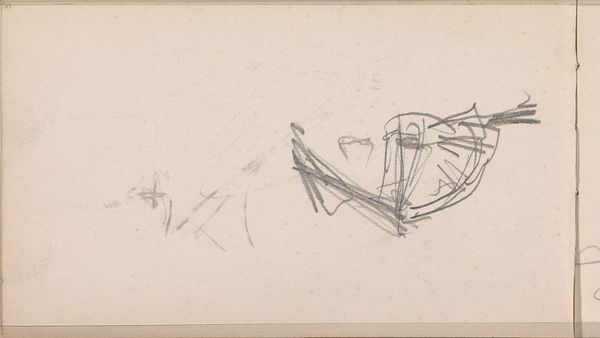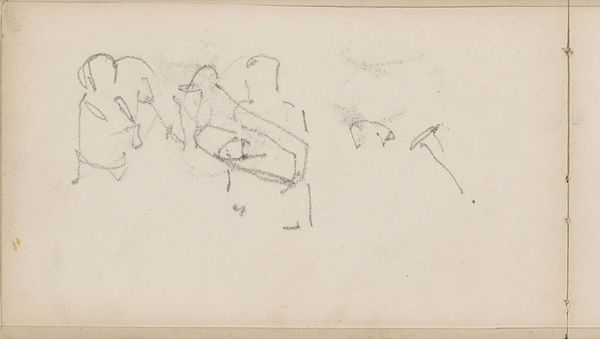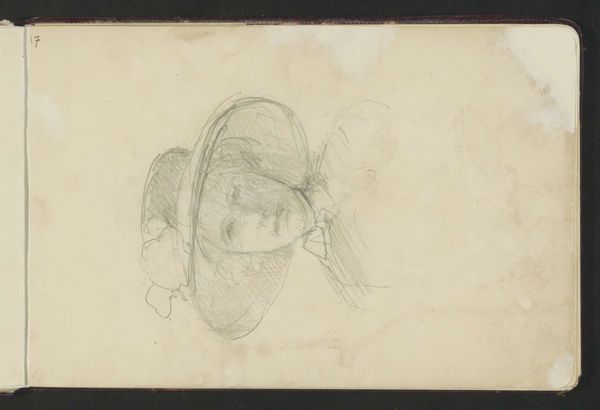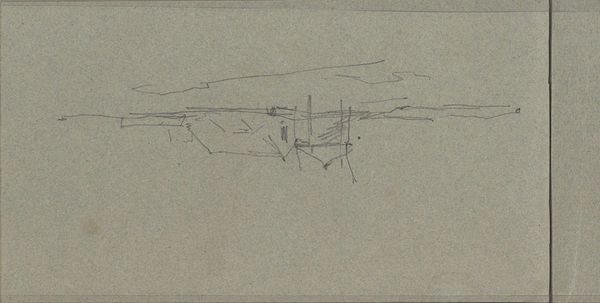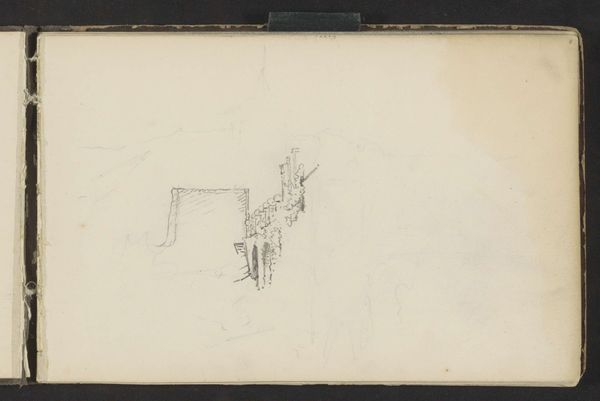
drawing, paper, pencil
#
portrait
#
drawing
#
quirky sketch
#
impressionism
#
sketch book
#
hand drawn type
#
figuration
#
paper
#
personal sketchbook
#
idea generation sketch
#
sketchwork
#
pen-ink sketch
#
pencil
#
sketchbook drawing
#
storyboard and sketchbook work
#
sketchbook art
#
realism
Copyright: Rijks Museum: Open Domain
Editor: Here we have Jozef Israëls's "Apen", dating from sometime between 1834 and 1911. It’s a drawing on paper with both pencil and pen and ink. It looks like a quick sketch from a sketchbook. What do you see in this piece? Curator: Beyond its initial appearance as a simple sketch, this work invites us to consider the social dynamics inherent in observing and representing animals. Israëls lived in a time of shifting perceptions about human exceptionalism, influenced by Darwin’s theories. This sketch prompts questions about how we categorize and differentiate between ourselves and other species. How does this seemingly simple image reflect anxieties around our own place in the natural world? Editor: So, you are saying this is more than just a doodle; it’s related to social questions and ideas about human identity. Curator: Precisely. Israëls, known for his social realism, often depicted the lives of the marginalized. Though this isn't a direct representation of human suffering, we can analyze it through a similar lens. Consider the power dynamics at play: the artist observing and documenting the "other." It encourages us to contemplate how societal power structures influence representation, even of animals. What implications arise when we translate such hierarchies onto non-human subjects? Editor: That's a completely different way of looking at a simple monkey sketch. I never considered those issues about representation, otherness, and power in art before. Curator: And how these power dynamics play out beyond human interaction? Exploring those questions allows us to reflect critically on historical and ongoing inequalities. Perhaps Israëls's sketch serves as an entry point into dismantling the conventional art historical narrative. Editor: That makes me think about the artist's responsibility and how we might be participating in similar ways of looking today. I definitely have a new perspective on animal portraits now!
Comments
No comments
Be the first to comment and join the conversation on the ultimate creative platform.
